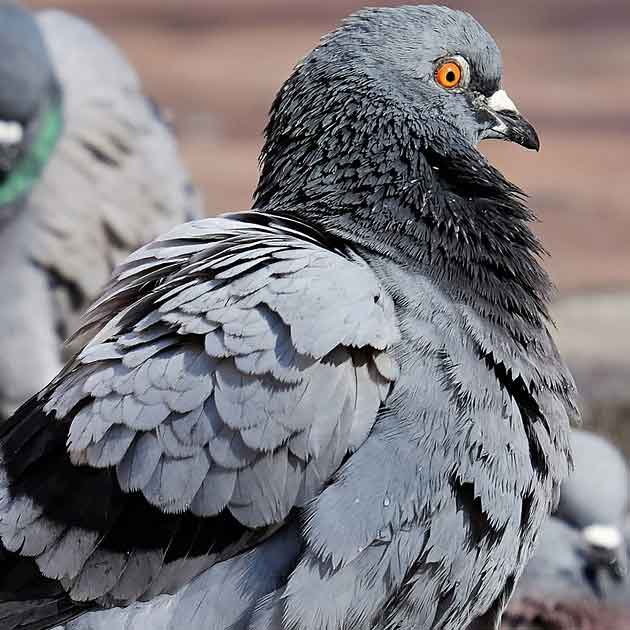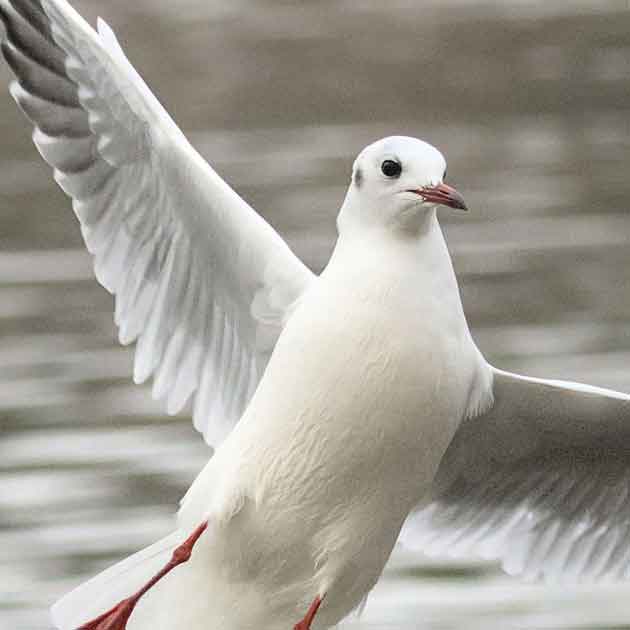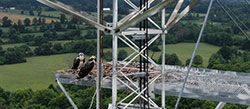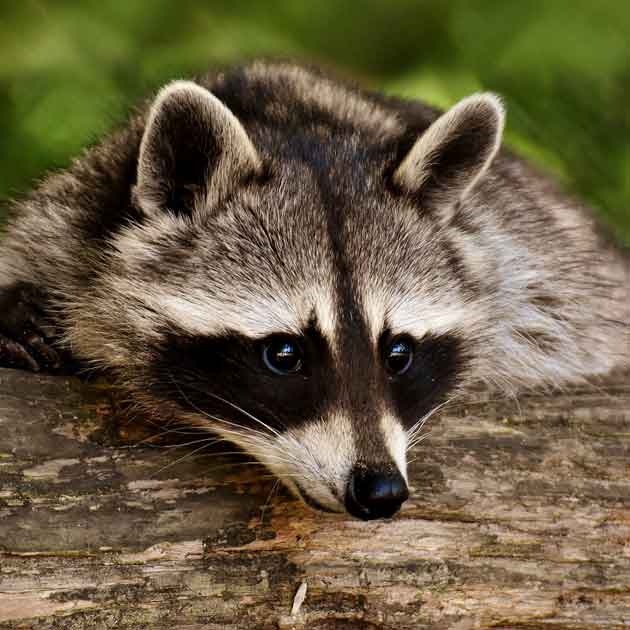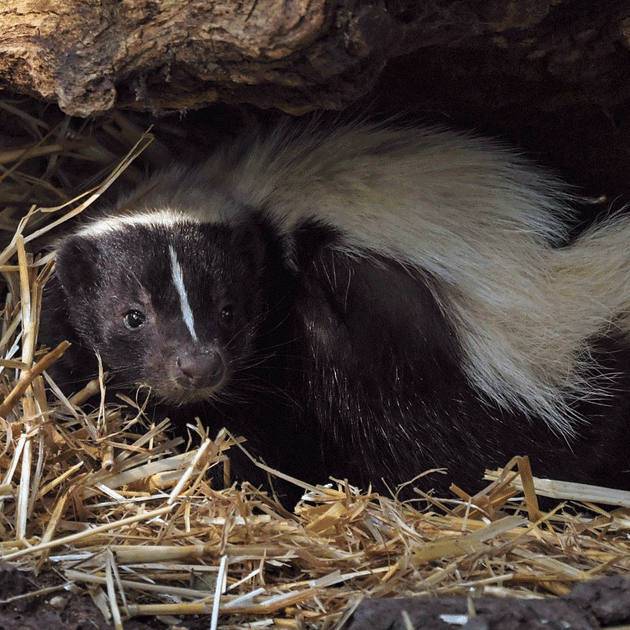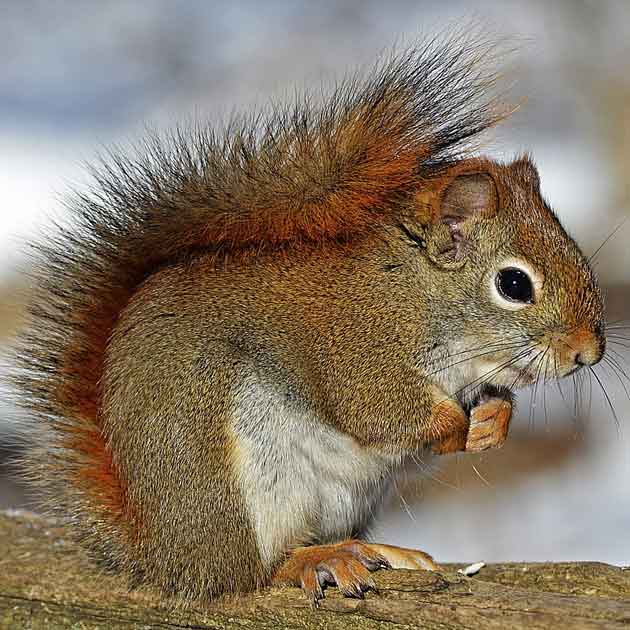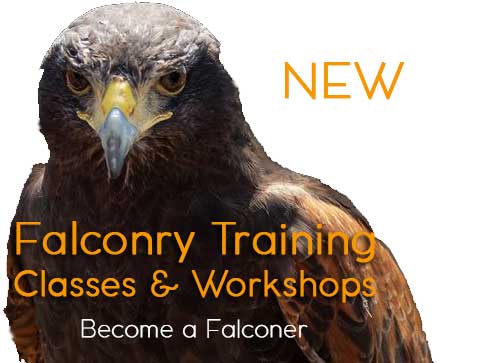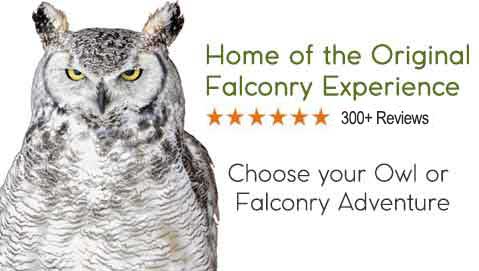BLOG | Hawkeye
News, little truths and wisdom regarding Pest Bird & Animal Wildlife Control, Falconry, and Birds of Prey....
Raccoon Removal from Gutters and Downspouts in GTA
- Written by: Dan Frankian
While raccoon control in attics is a well-known and long-suffered problem, most property owners don't consider the fact that raccoons around gutters and downspouts are causing far-reaching and costly damage as well.

Gutters are more than just water channels; they are raccoon highways. Clever and persistent as they are, raccoons use gutters as a pathway to access other parts of your building.
This article will serve as a comprehensive guide for residential, commercial, and government property owners and facility managers, revealing the subtle signs of a raccoon problem, explaining the unique challenges and risks, and presenting a professional, permanent solution to protect your property's foundation and structure.
Why Raccoons Target Gutters and Downspouts
Raccoon Behaviour:
Raccoons are expert climbers and their dexterous paws easily grip the textured surfaces of gutters and downspout. Gutters serve as a ladder to the roof, providing an entry point to more vulnerable areas, with your attic as the eventual destination.
- Roof Vents and Soffits:
A raccoon can easily pry open or tear through plastic or aluminum coverings. Learn more about how to get rid of raccoons from soffits. - Chimneys:
An uncapped chimney is an open invitation for a raccoon family, providing warmth and shelter from the elements.
Nesting Opportunities:
Clogged gutters, filled with leaves and debris, can provide nesting materials for a female raccoon looking to build a den. Read more about removing raccoon dens in the GTA at https://www.hawkeye.ca/blog/raccoon-nest-or-den-removal-in-the-gta.
Food and Water:
Gutters often collect standing water, and are close to food sources like nearby bird feeders, outdoor trash bins, or fruit from overhanging trees.
Signs of Raccoons in Your Gutters or Downspouts
You hopefully already do regular inspections of your home or business and all outdoor structures. Don't forget to look at your gutters and downspouts for signs of raccoon activity. These signs include:
- Scratches, dents, or bent aluminum;
- Loose or detached downspouts;
- Nesting debris or leaves stuffed inside;
- Strange noises (scratching, thumping, growls) near eaves at night;
- Overflowing or clogged gutters with fur/debris.
Risks and Damages Caused by Raccoons in Gutters
Residential Properties
In addition to increased costs like higher heating bills and the repair of structural damage, raccoons in gutters or around the home in general also pose considerable health risks for family and pets.
Water Damage:
Gutters detached by a raccoon's weight can cause water to pour down the side of the house, leading to siding and fascia rot, as well as foundation erosion and basement flooding.
Roof Damage:
Torn shingles and bent or torn vents lead to water and ice damage AND allow other animals (squirrels, for example) access as well. Also keep in mind that most homeowner's insurance policies won't cover raccoon damage.
Attic Damage:
Entry through the roofline can lead to torn insulation, chewed wiring (a fire hazard), and biohazard contamination from feces. This article deals specifically with getting raccoons out of your attic: https://www.hawkeye.ca/help-there-s-a-raccoon-in-my-attic
Commercial and Government Properties:
Property managers and owners deal not only with structural damages but also need to consider the health and safety of the public, employees, and customers.
Structural Integrity:
Raccoon damage can compromise the building's waterproof envelope, leading to long-term structural issues.
Health Code Violations:
For restaurants or public buildings, raccoon feces can lead to health and safety risks, resulting in fines or forced closures. Raccoon latrines are no joke and their cleanup is a job for professionals - see: https://www.hawkeye.ca/blog/raccoon-poop-removal.
Reputational Damage:
A visible pest problem can harm a business's reputation and lead to tenant dissatisfaction.
Winter-specific risks:
Frozen gutters crack under the weight of ice and raccoons.
 How to Keep Raccoons Away from Gutters
How to Keep Raccoons Away from Gutters
Prevention is always better than trapping raccoons and repairing damage. Here are some tips for keeping raccoons away from your gutters:
Secure Food Sources
The first and one of the most important things you can do is to restrict access to food. Secure all outdoor garbage bins, remove outdoor pet food bowls, store pet feed inside, and clean up fallen fruit.
Remove Climbing Access
Trim overhanging tree branches (at least 6-8 feet from the roof) that raccoons might use to bypass downspouts.
Install Protective Barriers
Consider installing commercial-grade gutter guards and downspout protectors that are difficult for raccoons to remove.
Challenges of Gutter-Specific Raccoon Removal in Toronto and The GTA
The Winter Problem:
As winter approaches, a raccoon is even more determined to find a warm, secure den. If a raccoon family settles in your attic for the winter, the damage to gutters, spouts, and your home's structure and insulation can be extensive and will be much more difficult to address in freezing temperatures and deep snow.
The Problem with Relocation:
Once you are stuck with raccoons on your property, the standard solution is to trap and release the animal(s). Unfortunately, released raccoons almost always return and you get to do it all over again. And again.
- The 1-km Rule: Most wildlife control companies are legally bound to relocate a raccoon within one kilometre of the capture site, a distance a raccoon can easily travel back from.
- The "Return" Guarantee: Raccoons have a strong homing instinct will almost certainly return to your property, especially once they are familiar with it and regard it as their territory. This will regularly leads to repeat offenders and causes repeat damage and recurring costs.
The DIY "Greasing" Myth:
While a greased downspout might work temporarily, a good rain storm will undo your efforts and require you to consistently reapply. Furthermore, a determined raccoon will find another way up, often using nearby trees, fences, or a different, less-slippery part of the building.
How to Get Rid of Raccoons Already in Gutters/Downspouts
Do NOT attempt DIY removal. You'll put yourself at risk of bites, rabies, and falling accidents. You'll put raccoons at risk of trapping themselves in downspouts or gutters, creating emergency situations.
The Hawkeye Advantage:
Hawkeye Bird & Animal Control is one of the best and most trustworthy companies in Canada. It has authority, expertise, and license to humanely euthanize raccoons, offering a permanent, legally compliant solution that ends the cycle of repeat infestations. Using humane live traps, raccoons can be safely captured and then provide you with the option to either release the animal within one kilometer or have it humanely euthanized.
DIY vs. Professional Raccoon Removal: Which is Better?
If you are the "go-getter" type, you may want to deal with your raccoon problem on your own. Here are a few things to consider before you set out to do so:
- You'll need to buy or rent the appropriate (type and size) live trap.
- After you trap a raccoon, you will likely want to release it within the legally required one kilometer range - expect to see that raccoon again a short time after.
- A previously trapped and released raccoon will become trap-shy. Raccoons are highly intelligent critters that learn by observation and have an excellent memory.
- Handling raccoons comes with a risk of injury - a cornered raccoon will attack you to defend itself. With any bite comes a risk of rabies.
- A professional wildlife control agent will be able to humanely, safely, and legally remove one or more raccoons from your property.
- A professional raccoon removal service like Hawkeye can offer permanent removal and help you with exclusion strategies to prevent new raccoons from invading your home.
- The cost of repairing structural damage to your home or business almost certainly will exceed the cost of professional raccoon removal.
So, the answer is that a professional raccoon removal service is safer than handling wildlife yourself and can offer permanent solutions.
Why Choose Hawkeye Raccoon Removal Services
- Hawkeye is specialized in raccoon removal from gutters, roofs, and downspouts.
- We are fully licensed, and insured, with over 35 years of experience.
- We are serious about offering compassionate and long-term wildlife removal.
- Our raccoon removal experience ranges from residential homes and condos to office buildings and government facilities.
- We are the only company in the GTA to offer permanent raccoon removal. Guaranteed.
- We offer 24/7 emergency raccoon removal for urgent cases.
Professional Raccoon Removal from Gutters & Downspouts
Protect your home or business from the hidden but costly problems of raccoons around gutters and downspouts. Now is the time to prevent possible damage during the upcoming winter months by employing professional raccoon removal and prevention. Contact Hawkeye Bird & Animal Control today to keep your home or business safe in the Greater Toronto Area, including Mississauga, Brampton, Oakville, Newmarket, Pickering, Markham, and Oshawa.
Get Rid of Raccoons in Underground Parking Garages
- Written by: Dan Frankian
Have you ever run into a raccoon in your underground parking or a raccoon in the garage rafters? You’re not alone.

A hidden and often overlooked problem for property owners is the threat of raccoons using underground parking garages as their winter den. This issue is becoming increasingly common as residents and businesses alike prioritize underground parking to protect vehicles from the harsh Toronto winters.
While a garage is meant to be a safe, protected space for cars and storage, its enclosed nature, stable temperature, and access to garbage make it a prime, year-round habitat for raccoons. With the cooler weather approaching, the urgency of this problem increases dramatically as raccoons seek a secure, insulated environment to escape the cold. This poses a significant and unique challenge for various property types, from residential condos and apartments to commercial buildings and retail plazas.
In this article we will explore options for homeowners and business owners when it comes to raccoon removal in Toronto and the GTA, detailing the specific challenges and risks of an underground garage infestation and presenting a proven, permanent solution to protect your property and safety.
Why Underground Garages Are a Raccoon's Dream Home
Raccoon Behavior
Raccoons and other wildlife are naturally drawn to safe, dark, and secluded spaces that offer protection from predators and the elements. Underground garages provide just that.
Ideal Nesting Sites
During their first year of life, young raccoons often stay with their mother during the winter months. There is strength in numbers, and many bodies create more heat to survive Toronto's harsh winters. Underground garages often contain spaces that are particularly vulnerable. This includes:
- Inside utility rooms, mechanical rooms, and stairwell landings.
- Behind false ceilings, in wall voids, and near piping or ventilation shafts.
- Underground tunnels, drainage systems, or behind storage lockers.
- Under vehicles that are parked for extended periods.
Properties Most Affected by Raccoons
Urban development, the ever increasing population in cities all across Canada, and our aversion to long commutes leads to more and more construction of high-rise buildings. And, most of them include underground parking. This is wonderfully convenient for tenants but also extends and invitation to urban raccoons. The most common complaints about raccoons in underground parking facilities come from:
- Residential condos & apartments – Shared underground lots with multiple entry points offer easy access to raccoons.
- Commercial buildings – Hotels, retail, offices, and mixed-use properties are targets due to reduced traffic and activity in the evenings and overnight.
- Luxury homes & townhouses – Private underground garages can provide great spaces for raccoon dens.
- Municipal/government facilities – Hospitals, community centers, and public buildings also see reduced human activity overnight - perfect for raccoons.
How Raccoons Get into Modern Underground Garages
Keeping raccoons out of underground parking spaces is next to impossible. There are usually many entry points, including:
- Utility Entry Points: Raccoons often exploit gaps where electrical conduits, plumbing, or gas lines enter the building through the foundation walls.
- Drainage Systems: Raccoons can enter through large, unsealed storm drains and sewers that connect to the garage's drainage.
- Compromised Perimeter Doors: A small gap in a main garage door, a faulty seal on a man door, or a door that doesn't close properly can all provide a consistent entry point.
- Ventilation Shafts: They can climb up or down ventilation shafts and squeeze through damaged or poorly sealed vents to access the garage.
Risks of Raccoon Infestation in Underground Garages
Health and Safety
- Biohazards: Raccoon feces in a confined space is a major health risk, potentially containing parasites like raccoon roundworm. Raccoon feces should only be handled by professionals with PPE and appropriate safety protocols.
- Aggressive Behavior: A cornered raccoon is a dangerous raccoon. They can become aggressive when startled, posing a direct threat of bites and scratches to residents or staff. A single raccoon bite can lead to a fatal rabies infection.
Property Damage and Costs:
- Chewed Wires: Raccoons chewing on electrical wiring can cause power outages and create a serious fire hazard.
- Pipe Damage: Damage to water and drainage pipes can lead to leaks and mold.
- Clogged Drains: Drains compromised by raccoon feces or nesting materials can lead to flooding and extensive water damage.
- Insulation and Structure: Raccoons will tear up insulation in wall voids and destroy drywall or other structural elements to access den sites.
- Cost of Cleanup: The biohazard cleanup and sanitization required after a raccoon den has been removed can be costly and extensive.
 Why Winter Makes Garages so Appealing
Why Winter Makes Garages so Appealing
As winter approaches, a raccoon's desire for a secure den intensifies. A female raccoon is often looking for a place for her young family to overwinter, making a warm, undisturbed garage a top choice that must be addressed immediately.
- Garages stay warmer than outdoor temperatures, making them optimal for raccoon denning.
- More residents use underground parking to avoid snow and salt, increasing food and trash presence.
- Limited outdoor food sources push raccoons toward urban underground shelters.
Why Standard Removal Methods Fail for Underground Garages
Effective raccoon removal from underground parking areas often proves difficult. Almost all trapping (even by professionals) results in the release of the animal(s) and their inevitable return.
Accessibility Issues:
- Multiple hidden entry points (vents, ramps, ceiling access);
- Larger spaces make it harder to locate nests;
- Safety risks when confronting raccoons in enclosed areas.
The "Relocation" Problem:
Raccoons are intelligent, persistent critters with excellent homing instincts. "Catch and release" methods are particularly ineffective in this specific environment:
- The 1-Km Rule: Almost all raccoon removal companies are legally bound to relocate a raccoon within one kilometre, a distance a raccoon can (and will) easily travel back from.
- The "Return" Guarantee: A raccoon's strong homing instinct, its familiarization with the property, and the oh-so-convenient multiple access points will almost certainly lead it back to the warmth and safety of the garage.
The "One-Way Door" Dilemma:
In a large, complex space like an underground garage, a one-way door is highly completely ineffective. A raccoon will simply find an alternate entry point.
Permanent Raccoon Removal for Underground Garages
The Hawkeye Advantage: Hawkeye has the license to humanely euthanize raccoons, offering a permanent, legally compliant solution that ends the cycle of repeat infestations.
- Step 1: Schedule an on-site inspection of the entire garage, including hard-to-reach areas like wall voids and ceiling spaces. Professionals such as Hawkeye Bird & Animal Control may use thermal cameras to confirm the presence and location of the raccoons.
- Step 2: Base on the findings during the inspection, the appropriate number of humane live traps will be set. You will need to designate a person to monitor the traps and inform Hawkeye if an animal has entered a trap.
- Step 3: You, the client, decides how to proceed once the raccoons are caught. We can release the animal or humanely euthanize it as the final, permanent step, providing a guaranteed solution. We are the ONLY company in the GTA to offer a guarantee that the animal(s) will not return.
Get Rid of Raccoons from Underground Garages
Underground garages attract raccoons due to warmth, shelter, and often food. If you manage a property with such a space in the Greater Toronto Area, contact Hawkeye Bird & Animal Control today and avoid the risks of property damage and any health and safety issues for your tenants or the public.
Prevention and exclusion techniques are helpful, but professional removal is the permanent solution.
How to Get Rid of Raccoons in Backyard Ponds and Local Water Features
- Written by: Dan Frankian
Did you know that raccoons love water and are excellent swimmers? And, did you know that raccoons have a habit of "washing" their food before consumption? Perhaps this explains why raccoons are so drawn to all kinds of water features - from backyard pools and DIY garden ponds to park retention ponds and ornamental fountains in courtyards and public parks.

While watching a raccoon or two going for a leisurely swim in your backyard may sound entertaining, our nimble little trash pandas actually cause a slew of damage, including pool and pond liner damage, ecological disruption, leave a big mess, and pose disease risks. The biggest risk is water contamination from raccoons infected with rabies. This would put your pets and other wildlife at great risk. In this article, we'll explore some of the issues, answer common questions from pond owners and provide both practical and legal solutions for protecting your backyard pond and/or remove raccoons from your GTA property.
What Types of Ponds and Water Features Are at Risk?
- Residential Ponds – Decorative garden ponds, backyard fish ponds, and small man-made water features.
- Commercial Water Features – Fountains found in plazas, hotel landscapes, golf courses, and public parks.
- Natural Ponds & Local Lakes – Community parks, forest edges, and rural properties.
- Municipal Stormwater Ponds – These bodies of water are often located near residential complexes.
Why Do Raccoons Target Ponds & Water Features?
- Ponds typically offer a variety of foods for raccoons (fish, frogs, and aquatic insects).
- Ponds allow easy access to drinking water and for washing food.
- Shelter and cover often accompany water features (trees, shrubs, and sheds).
- Seasonal patterns – ponds or pools are particularly popular in warmer months.
 What Damage Can Raccoons Cause?
What Damage Can Raccoons Cause?
- Fish loss and damaged aquatic plants;
- Contaminated water from droppings and debris or saliva of a rabies infected raccoon;
- Damaged pool or pond liners and landscaping;
- Aggressive encounters with pets.
DIY Raccoon Control for Your Ponds and Water Features
Wondering how to keep raccoons out of backyard ponds, fountains, and other water features? The bad news is that there are no truly effective barriers or deterrents. Trapping and relocation or permanent raccoon removal are really the only option.
Physical Barriers
- Low-Voltage Electric Fencing: A low-cost, low-voltage electric fence, placed a few inches above the ground, can acts as deterrent. Consult with your local hardware or feed store.
Sensory Deterrents
- Motion-Activated Sprinklers: The sudden spray and noise can be effective for a few days - until raccoons have gotten used to them and realize that sprinklers are harmless.
- Motion-Activated Lights: Raccoons prefer the dark and a sudden, bright light can disorient and scare them away. Again, this is temporary at best. Raccoons are highly intelligent and quickly learn that there is no actual danger.
- High-Frequency Sonic Repellents: Devices that emit sounds inaudible to humans may be irritating to pests. And again, raccoons will learn to studiously ignore such sounds.
Habitat and Food Management
- The Don't Feed Rule: IIf you want to get rid of raccoons around pools or any outside area, it is of utmost importance that you do not leave pet food outside and ensure that garbage cans are securely sealed. Consider a fence around your vegetable garden and pick up any fallen fruit from your orchard.
- For Public Areas: Community members are encouraged to coordinate with park authorities, condo boards, or commercial property managers to ensure a consistent "no feeding" policy.
Read more: How to Get Rid of Raccoons in Backyard Ponds and Local Water Features
Is It Legal to Kill a Canada Goose in the GTA?
- Written by: Dan Frankian
Canada goose population is on the rise on residential, commercial, and public properties in the GTA and beyond. Geese are intelligent, social, and adaptive birds that have learned to thrive living alongside human developments.

The growing presence of geese (and the mess they leave behind) seems to lead to an increase of online searches about killing or removing geese. However, before you set out to tackle the Canada goose problem on your own, please take a minute to learn about the legal, ethical, and practical aspects of such an endeavor.
FAQs
Q: Can I shoot a Canada goose on my own property in the GTA?
A: You may ONLY shoot a goose after obtaining the appropriate permits. The permits required depend on time of year (inside or outside of approved hunting season), the reason or purpose of the kill, the amount of geese you plan to shoot, and your municipality.
Q: What happens if I accidentally kill a goose?
A: If you accidentally hit a Canada goose with your vehicle, it is best to report the accident to local police. Your report and cooperation will help show that your actions were neither negligent nor reckless. There can be a penalty for killing a Canadian goose, if you are found to have done so recklessly and unlawfully. More information on that below.
Q: How do I apply for a permit to remove geese legally?
A: You'll need to request the appropriate permit from the Canadian Wildlife Service in your area. You can obtain more information here: https://www.canada.ca/en/environment-climate-change/services/migratory-bird-permits/damage-danger/instruction-sheet.html
Q: Do Canada geese ever get removed by the city?
A: Yes, many municipalities hire professional goose removal services such as Hawkeye Bird & Animal Control. In Toronto, the Economic Development and Parks Committee oversees the annual Goose Management Strategy.
Q: Are there any exceptions for farmers or landowners?
A: No, even farmers or landowners need to obtain permits to kill a goose. Failure to produce a current permit will result in a stiff penalty and potential court costs. A farmer in Northern Ontario who shot a single goose on his field and without realizing that his permit had expired, faced just that. He ended up successfully defending his position in court but still paid over $3,000 in legal fees, including the initial $300 fine.
 Are Canada Geese Protected in the GTA?
Are Canada Geese Protected in the GTA?
Yes, Canada geese are protected in Canada under the Migratory Birds Convention Act, 1994 (MBCA). This applies not only to killing Canada geese, but also to harassing them or disturbing nests. Any and all interference with Canada geese requires permits. The Canadian Wildlife Service (CWS) is the federal body responsible for enforcing this act and issuing permits.
Can You Kill a Canada Goose?
Yes, you can - but only with the appropriate permits. Generally, you'll either want to apply for a federal Migratory Game Bird Hunting permit (MGBH) or for a "Danger and Damage" permit issued by the Canadian Wildlife Service, based on the reason for killing a goose and time of year.
- Hunting in Ontario:
- Hunting is a regulated activity with specific seasons and bag limits.
- To hunt migratory game birds in Canada, you must have and present a valid federal Migratory Game Bird Hunting (MGBH) permit upon request by game officers. For more information, see our article explaining what is required to legally hunt migratory birds.
- Hunting is generally not permitted in urban areas like the City of Toronto due to firearm discharge bylaws. However, a wildlife specialist like Dan Frankian may be able to discharge firearms within city limits due to his Urban Marksman designation and proficiency.
- Permits for Nuisance Control:
Get Rid of Raccoons Nesting Near Oshawa Creek Trails
- Written by: Dan Frankian
Oshawa’s extensive creek systems, including Oshawa Creek, Harmony Creek, Farewell Creek, and Goodman Creek create the perfect conditions for raccoons to travel, forage, and nest. That is why homes backing onto or situated near these creeks are seeing increased raccoon activity, especially in spring and fall.

Let's explore how your home may be affected and how to get rid of raccoons effectively and permanently. Here's a quick Q & A overview before we get into more detail:
- Question: What attracts raccoons to Oshawa's creek systems?
Answer: Abundance of water and shelter in often dense vegetation near creeks make for a perfect environment for raccoons. - Question: Why are homes near creeks targeted by raccoons?
Answer: In addition to the natural attractants, human dwellings offer further shelter as well as a constant food source. - Question: Where and how do raccoons enter a home?
Answer: Raccoons most often enter via or through the roof. They may rip up shingles or enter through vents or chimneys to gain access to the attic. - Question: Why do raccoons target outbuildings?
Answer: Outbuildings usually have less human traffic and make quiet denning sites while still being close to human-related food sources. - Question: What is the best way to get rid of raccoons?
Answer: The only way to guarantee long-term success is permanent raccoon removal. Merely trapping and relocating the raccoon rarely works and may leave the animal in distress.
Why Oshawa Creek Trails Attract Raccoons
- Abundant Water Source: Oshawa Creeks provides a constant water supply, which raccoons utilize for drinking and washing their food.
- Dense Green Spaces: The trails are surrounded by mature trees, shrubs, and natural vegetation, offering excellent cover, foraging opportunities, and natural den sites (e.g., hollow logs, tree cavities).
- Food Availability: The mix of natural food sources (berries, nuts, insects, small animals) from the creek areas, combined with human-provided food (garbage, pet food, and produce from gardens) from residential properties, creates an irresistible raccoon buffet.
- Connectivity: The trails act as natural highways, allowing raccoons to easily travel between natural habitats and residential areas, increasing their presence in adjacent properties.
- Shelter Opportunities: The transition zone between wild and urban areas provides numerous potential den sites, from natural burrows to human structures.
Properties Most Affected by Raccoons Near Oshawa Creek Trails
Residential Homes:
- Attics: A primary target due to warmth, darkness, and safety. Raccoons can enter through damaged soffits, fascia, roof vents, or uncapped chimneys.
- Chimneys: Provide a vertical, secure, and warm den site, especially for mothers with kits.
- Basements/Crawl Spaces: Offer cool, secluded areas for shelter.
Outbuildings:
- Sheds: Often provide easy access through loose doors, damaged foundations, or unsecured vents, offering a quiet den.
- Garages: Similar to sheds, they offer shelter and often contain accessible food (e.g., pet food, birdseed).
Outdoor Structures:
- Under Decks and Porches: Provide secluded, protected spaces for denning, especially during breeding season.
- Woodpiles and Storage Areas: Can offer temporary shelter or nesting spots.
 Prominent Raccoon Nesting Locations in the Oshawa Creek Trail Areas
Prominent Raccoon Nesting Locations in the Oshawa Creek Trail Areas
- Tree Cavities and Hollow Logs: Within the natural areas of the trails, these are traditional raccoon dens.
- Abandoned Burrows: Raccoons may take over dens or burrows dug by other animals.
- Storm Sewers and Culverts: Provide secure, hidden, and often temperature-stable environments.
- Residential Attics and Chimneys: As highlighted above, these are highly sought-after due to their warmth and protection.
- Underneath Decks and Sheds: The raised nature of these structures creates ideal, secluded spaces.
- Unused or Seldom-Accessed Areas: Any quiet, undisturbed spot or outbuilding on a property, particularly those with dense vegetation or overgrown areas, can become a temporary or permanent den.
How to Identify a Raccoon Infestation
Auditory Cues:
- Scratching, Thumping, or Rustling: Especially at night, from attics, walls, or under decks.
- Chattering or Whistling:: Raccoons are very vocal animals and communicate with one another, particularly during mating season in early spring.
- Chirping, Whining, or Crying: Distinctive sounds made by young raccoon kits, typically heard in spring and early summer.
Visual Clues:
- Entry Points: Keep an eye out for torn soffits, ripped up roof shingles, bent roof vents, damaged fascia boards, or displaced chimney caps.
- Chew or Claw Marks: Pay attention to surface marks on wood, wiring, insulation, and other structural components.
- Disrupted Gardens/Garbage: You may notice overturned trash bins, scattered trash, or raided fruit and vegetable patches.
- Raccoon Tracks: Distinctive five-toed tracks resembling small human hands are often found in soft ground, dust, or snow around entry points.
Read more: Get Rid of Raccoons Nesting Near Oshawa Creek Trails
How to Get Rid of Raccoons at Your GTA Campsite
- Written by: Dan Frankian
The Greater Toronto Area is home to many popular camping destinations—from provincial parks and conservation area to private RV spots. Of course, the lakes and woods that draw outdoor enthusiasts also attract raccoons and other wildlife.

Join us as we explore how to keep raccoons away from your campsite.
What Attracts Raccoons to Your Campsite?
In short: Food. Aside from the already favourable conditions of a wooded area and/or nearby water sources, the food that you bring to and store at your campsite (including garbage) is a big draw. Raccoons are intelligent and opportunistic little thieves and will happily pursue an easy meal over one that needs to be chased down. Their keen sense of smell as well as their uncanny ability to get into bins and containers turns your campsite into a buffet.
Why Are Raccoons a Campsite Problem?
While nighttime rummaging through your things may be an area of concern, the real issue with raccoons in your campsite is the health and safety risks they pose to your family and pets:
- Amid many bacterial diseases and parasites, rabies is the biggest concern. Close contact and even your pet's contaminated water can lead to catastrophic consequences.
- Camping in the early part of summer may inadvertently put you near a raccoon den and bring you (or your dog) face to face with a protective mother that is willing to go to battle to protect her litter. Likewise, a cornered raccoon (in a tent, perhaps) will defend itself with aggression.
What Problems Do Raccoons Cause at Campsites?
- Damage to tents, RV wiring, or gear;
- Scattering garbage and creating mess;
- Aggressive behavior if cornered or feeding young;
- Contamination risks (droppings and/or urine);
- Potential for rabies, bacterial infections, or parasites;
 What Are the Signs of Raccoon Activity at Campsites?
What Are the Signs of Raccoon Activity at Campsites?
- Noises at night (scratching, thumping, rustling, or chatter);
- Tipped-over trash bins or food containers;
- Paw prints around the site;
- Dens or raccoons sheltering under decks, trailers, or sheds.
How Much Does It Cost to Remove Raccoons from a Campsite?
It entirely depends on the number of traps needed and the number of technician visits. We explain this in more detail here: https://www.hawkeye.ca/raccoons-everything-you-ever-wanted-to-know
Raccoon Prevention Tips for Private Campsites or RV Owners
Before choosing your campsite, it's a good idea to check for existing raccoon or other wildlife dens on the premises. Raccoons often return to existing dens or repurpose other animals' dens.
Securing the Campsite:
- For RV Owners
Secure all outdoor compartments; - For Tent Campers
Use sturdy, sealed coolers and containers, preferably even further secure those containers with bungee cords to prevent nimble little raccoon paws from getting to your food.
How to Get Rid of Geese Around Toronto’s Harbourfront Properties
- Written by: Dan Frankian
Goose control in Toronto is a growing issued these days. The citie's harbourrfront properties continue to record an increase in the Canada goose population - condos, parks, marinas, patios, and green roofs are prime targets. Iit is important to get rid of geese near the harbourfront swiftly to avoid cleanup of the subsequent mess, mitigate the risks of health and safety hazards as well as minimize a loss of reputation.

Goose Removal in the Harbourfront Area
So, Why Do Geese Love the Harbourfront So Much?
- Toronto's waterfront offers abundant green space and manicured lawns (ideal for goose grazing);
- The proximity to water provides plenty of safety for nesting and escape from land-dwelling predators;
- Because of constant human traffic, urban environments tend to discourage the presence of natural predators;
- Human presence also means supplementary wildlife feeding - intentional or accidental.
The Impact of Geese Infestations on Harbourfront Properties
Property Damage
Excessive goose grazing leads to lawn destruction and the resulting fecal matter contaminates pathways, docks, and buildings.
Health Risks
Geese, like many bird species, carry and transmit a slew of diseases through feces and feathers, both bacterial and parasitic in nature. Some examples are Salmonella, Campylobacter, E. coli, Cryptosporidium and Giardia.
Safety Concerns
Canada geese are fiercely protective of their nests and offspring and known for aggressive behavior, particularly during the spring and early summer. Additionally, there are increased risks of slip-and-fall accidents due to wet and slippery surfaces from droppings.
Environmental Impact
Excessive goose droppings degrade water quality in the harbour. This becomes an even bigger concern for smaller bodies of water.
Most Affected Harbourfront Properties
- Condominium Rooftops & Green Spaces – they are ideal for nesting due to their height, warmth, and safety.
- Marinas, Floating Docks & Ferry Landings – these provide perfect resting zones for geese with minimal disturbance.
- Public Parks & Trails (HTO Park, Harbour Square Park) – with short grass, access to water, and food dropped by tourists, Toronto's parks make for perfect goose habitats.
- Restaurant Patios & Courtyards – food-seeking geese are persistent beggars and leave an unsanitary mess.
- Event Spaces & Open Waterfront Lots – geese often disrupt public events and make areas unusable.
 Challenges of Waterfront Goose Control
Challenges of Waterfront Goose Control
- Geese feel protected near water — escape routes, open views, and nesting privacy.
- Noise deterrents and decoys are largely ineffective and inappropriate for public settings.
- Legal protection under the Migratory Birds Convention Act demands permits for any and all goose control or removal methods.
- Nests may be hidden or inaccessible under benches and shrubs, around HVAC units, on rooftops, or below docks.
Should You Wait to Deal with a Canada Goose Problem?
No, you should not. Your problem, much like a flock of geese, will increase exponentially with time. Here's why:
- Canada geese return to the same nesting location to hatch 5-7 goslings every year.
- Nesting geese become territorial and aggressive — a public safety issue.
- Goose droppings carry bacteria and parasites, stain surfaces, and increase fall/injury risks.
Read more: How to Get Rid of Geese Around Toronto’s Harbourfront Properties
Raccoon Removal for Ajax Shoreline Sheds and Boathouses
- Written by: Dan Frankian
The town of Ajax sports a fabulous scenic shoreline that invites both tourists and wildlife. Raccoons are attracted to dense natural cover, quiet backyards, and ready access to water and food.

Many properties have sheds, boathouses, and storage units near the waterline, making them ideal nesting sites for raccoons, especially in spring. Raccoon activity in these zones can quickly escalate into serious structural and health issues if not addressed properly.
Why Raccoons Target Waterfront Sheds and Boathouses in Ajax
Proximity of Water
Raccoons are always attracted to water and structures near water - even more so than other wildlife. Raccoons are actually avid swimmers and have a tendency to "wash" their food before consuming it.
Easy Access
- Gaps under floorboards and skirting
- Loosely fitted doors or vents
- Wood rot or storm damage is common in lakeside buildings
Wildlife Corridors
Raccoons often follow Duffins Creek, Carruthers Creek, and shoreline tree lines as “wildlife corridors.”
Signs of Raccoons Living in Your Waterfront Shed or Boathouse
- Be on the lookout for daytime sightings, especially females during baby season;
- You may notice noises like scratching, growling, or thudding;
- Insulation or nesting material may be pulled out through cracks;
- Often, you'll notice a strong, musky odour of urine or feces;
- Pay attention to disturbed fish bait, pet food, or garbage in the structure.
 Challenges of Raccoon Removal from Boathouses and Waterfront Structures
Challenges of Raccoon Removal from Boathouses and Waterfront Structures
Limited Accessibility
Crawlspaces or dockside supports are often too narrow for conventional traps or are submerged;
Trap-Shy Behaviour
Lakeside raccoons are more experienced due to frequent human contact and repeated trapping attempts. Learn more about trap-shy raccoons here: https://www.hawkeye.ca/blog/trap-shy-raccoon.
Hidden Babies (or Kits)
Raccoon kits may be concealed under decking or in rafters—removal must account for the collection of ALL babies and humane handling.
Increased Return Rate
Open surroundings mean raccoons can easily circle back and return.
Weather-Worn Entry Points
Constant exposure to lake-effect moisture creates easy access (wood expansion, soft floors, and rotting walls).
How to Get Rid of Raccoons from Your Ajax Shed or Boathouse
Secure All Entry Points:
- Inspect sheds and boathouses thoroughly for any gaps, holes, or weak spots larger than 4 inches (raccoons can squeeze through surprisingly small openings).
- Use heavy-gauge galvanized steel mesh (1/4" or 1/2" hardware cloth) to cover all vents, openings, and potential entry points. Secure it firmly with screws.
- Reinforce weak soffits, fascia, and roof edges.
- Ensure doors and windows are tightly sealed and latched.
Read more: Raccoon Removal for Ajax Shoreline Sheds and Boathouses
How to Get Rid of Raccoons from Soffits in Markham
- Written by: Dan Frankian
Raccoons in Markham and other GTA neighbourhoods are increasingly using soffits as entry points. Soffits are often vulnerable to aging materials, roofline gaps, and tree overhangs, especially in older homes (e.g., in Unionville and Thornhill). It’s not just noise—raccoons in soffits can lead to roof damage and attic breaches and associated water damage and electrical issues, including fire risks.

Why Raccoons Choose Soffits Over Other Entry Points
- Raccoons can easily bend aluminum or wood soffits;
- Soffits are a weak connection points between the fascia and the roofline;
- Older roofs often offer vents without covers or screening;
- Soffits offer some level of protection from rain and predators;
- Food sources like compost bins and gardens are often found right beneath soffits.
Hidden Dangers of Raccoons in Your Soffits
Structural Damage
Raccoons entering through soffits frequently leave torn panels, ruined insulation, and the potential for water leaks behind.
Health and Hygiene
Urine seepage and/or droppings inside your soffits pose serious health risks to you and your family.
Escalation Risk
Soffit breaches often lead to attic infestations.
Baby Season
Female raccoons may nest in soffits with kits, making removal that much trickier.
Read more: How to Get Rid of Raccoons from Soffits in Markham
Goose Control for Brampton Parking Lots
- Written by: Dan Frankian
Why Are Canada Geese Choosing Brampton Parking Lots?
In this case, geese aren’t looking for water — they’re looking for safety and food.

- Large, flat, open areas mimic a natural “safe zone” (geese can spot threats from all directions)
- Asphalt absorbs heat, making parking lots warmer during chilly spring mornings
- Landscaped islands, grassy borders, and mulched areas provide grazing and nesting space
- Quiet time windows (weekends, early mornings, holidays) allow undisturbed nesting
- Examples across Brampton:
- Commercial plazas
- Business parks
- Apartment or condo visitor lots
- Public facilities and industrial yards
- Parking areas in public parks such as Chinguacousy Park
What Kind of Damage Do Geese Cause in Parking Lots?
Corrosive Goose Droppings
- Acidic feces damage vehicle paint and concrete sealants;
- Droppings stain paving stones, entryways, and decorative features.
Blocked Drains and Ponding Water
- Nesting materials clog curb drains and catch basins;
- Standing water leads to slip and fall hazards and asphalt wear.
Accident and Liability Risks
- Goose droppings on painted lines and ramps create slippery and unsafe surfaces;
- Aggressive geese may cause injuries;
- Slippery feces are particularly risky in senior centers, healthcare facilities, and schools.
Aggressive Behaviour Near Entrances
- Nesting pairs may hiss, chase, or attack staff and customers;
- Increased complaints, bad online reviews, and workplace tension.
Delays for Operations & Deliveries
- Industrial and logistics yards may see vehicle movement delays due to flocks of geese blocking areas.
All of these issues impact reputation, safety, maintenance costs, and insurance risk — especially for commercial and municipal lots.

What Makes Goose Problems in Parking Lots Unique?
Unlike ponds or parks, parking lots are harder to manage due to public access, hard surfaces, and traffic flow:
- Geese may nest in awkward, hidden spots, such as under shrubs, medians, near dumpsters, or HVAC units;
- Accumulation of droppings on walkways and car doors is messy, slippery, and foul-smelling;
- Customer complaints or tenant frustration may impact reputation;
- Aggressive geese near nesting zones: will block access, hiss, chase, or even attack;
- Collisions with automobiles;
- Property damage due to corroded paint and steel railings and/or jam drainage grates from excessive goose droppings;
- Safety and liability risks are elevated, especially around seniors, kids, or during wet weather.


